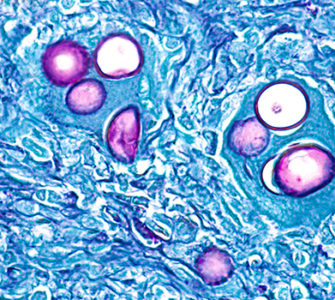Coccidiosis control, litter management key to NE prevention in broilers raised without antibiotics
Good coccidiosis control and litter management are the two most important steps producers can take to prevent necrotic enteritis (NE) in flocks raised without antibiotics, Charles Hofacre, DVM, PhD, told Poultry Health Today.
One of the triggering factors that allows the growth of Clostridium perfringens (CP) — the toxin-producing organism that causes NE — is coccidial damage to the chicken’s intestinal epithelium.
The intestine’s response to damage is to produce mucous for self-protection, which CP utilizes as a food source. The more mucous, the faster CP will grow, explained Hofacre, president of Southern Poultry Research Group Inc., Athens, Georgia.
CP lives in the bird’s ceca, but it creates NE in the small intestine’s duodenum and jejunum. Two organisms that cause coccidiosis, Eimeria maxima and E. acervuline, live in the jejunum and duodenum, respectively — areas where CP colonizes and produces the toxin that leads to NE, he said.
Hofacre conducts research to better understand the CP and NE cycle and how it can be broken. In a recent study, he found that interventions need to be aimed at reducing CP colonization. If there’s less CP colonization, there’s less toxin produced, which correlates with lower levels of NE.
Because coccidia and CP both thrive on moisture, good litter management is imperative for keeping these organisms in check.
Hofacre also advised increasing downtime between flocks. Anything less than 14 days allows too much buildup of bacteria in the litter, he cautioned.
Posted on January 10, 2019

















